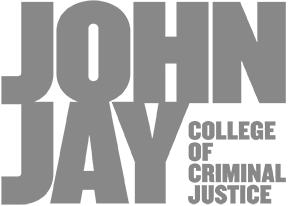President’s Gallery
On view February 14th-April 13th, 2018
Featuring 18 artists working through a range of media, Internalized Borders addresses immigration, identity, detention, and deportation. Taking the 9/11 attacks on the World Trade Center as a pivotal moment for the escalation of attacks on immigrants, this exhibition examines the various ways that language and legal systems create internal and external borders based on fear, the criminalization of identity, the economics of migration, and the construction of otherness.
A border can be a physical wall between territories restricting people from moving freely across it, a social construct articulated through language and belief systems, a psychological state, or a checkpoint for the legal system to determine who is accepted and who is not. Humans define themselves in the context of groups framed by these borders. As borders are internalized they modify who we are with categories such as race, gender, religion, ethnicity, and language. —Ultimately, a stereotyping belief system that creates oppressive categories that manifest as racism, sexism, and classism. Borders subjugate cultural identity and exaggerate our differences, but can also cultivate transient cultures and the sharing of disparate ideas.
While borders are real, they are also permeable—social constructs that require constant re-examination. The artists we have selected explore these ideas and offer a counter discourse. Francisco Donoso‘s in the installation Finding Form mixes the vocabulary of cartography with an abstract terrain, to question the arbitrariness of borders, the search for a sense of place and the psychological displacement experienced by migrants.
Alva Mooses’ installation Moving Earth/ Moviendo Tierra examines the legal process of relocating landscape transporting a singular Adobe brick from Northern Mexico to the States. Joiri Minaya’s video Siboney investigates ways of hacking the dominant narrative projected onto us through an embodiment of the projection creating a hyper awareness of our assumptions.
Edel Rodriguez’s drawing of a drowned hand entangled with a red line creates a strong visual statement about violence against people of color. Cuban immigrant Tatiana Garmendia’s video Border Crossing the artist lies partially nude and face up, with eyes staring upwards. The motionless body is spotlighted from above as though a surveillance airplane has found her. Garmendia’s animation The Unraveling functions as both a prose poem and a visual journey that tells of her parents’ experiences after the Revolution in Cuba and their migration Journey. Deborah Faye Lawrence’s collage Game of the Occupied States (“Buy and Sell from Coast to Coast”) provides a chilling image of a police state with surveillance towers punctuating a border fence around the whole country.
Ricardo Gomez’s Labyrinth with Wall (Map) uses the tippy labyrinth game overlaid with a map of the Americas and a symbolic representation of the border wall running along the US-Mexico. Felipe Baeza, Untitled (so much darkness, so much brownness), 2016, transforms the map of the United States of America through a somber earthy palette embedding in it a brown figure reminding us of the erasures of native cultures. Similarly, Mauricio Cortes Ortega’s Painting Tio Ghillie is a portrait painting of a Ghillie Suit (type of camouflage clothing designed to resemble the background environment such as foliage, snow or sand) that suggests that the landscape is greater than any singular force, and to question what can be seen versus not, who is there and isn’t.
Shahrzad Changalvaee from Tehran in her installations As Long as it Casts #25, We Thought it is Obvious #1, and We Thought it Obvious #2, 2018 explore materiality, displacement, language, making and hope. Maria de Los Angeles’s wearable sculptures and installation of drawings bring for the individual focus on the undocumented citizen, the psychological impact of migration, biculturalism, and the ethical questions surrounding undocumented migration. Her imagery is a composite of current events, memories, imagination, myth and biographical truth.
These are some of the artists engaging in conversations about social justice. Ideas of citizenship, biases in language, criminalization of identity, law, and borders explore the complexity of social interactions among diverse bodies. We believe that this exhibition aligns with the mission of John Jay College of Criminal Justice to explore social justice in its many dimensions and will stimulate the minds of the students, faculty, and visitors alike.
Internalized Borders will Feature works by Felipe Baeza, Ricardo Gomez, Dina Bursztyn, Ryan Bonilla, Maria de Los Angeles, Alva Mooses, Mauricio Cortes Ortega, Constanza Alarcon Tennen, Francisco Donoso, Shahrzad Changalvaee, Edel Rodriguez, Tatiana Garmendia, Deborah Faye Lawrence, Joiri Minaya, Jodie Lyn-kee-Chow, and Patricia Cazorla & Nancy Saleme.
Curated by Maria de Los Angeles and Susan Noyes Platt
Image by Ryan Bonilla, Live Free or Die, 2001
Headline Image by Joiri Minaya, Siboney, 2014.
President’s Gallery On view February 14th-April 13th, 2018 Featuring 18 artists working through a range of media, Internalized Borders addresses immigration, identity, detention, and deportation. Taking the 9/11 attacks on the World Trade Center as a pivotal moment for the escalation of attacks on immigrants, this exhibition examines the various ways that language and legal […]
